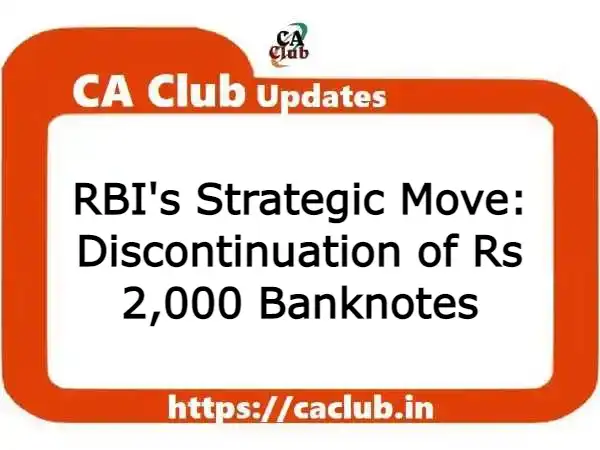In an unprecedented move, the Reserve Bank of India (RBI) has announced the immediate halt in the circulation of the Rs 2,000 denomination banknotes. This move is a response to concerns about potential misuse of these high-value notes for illegal activities. With a focus on the reasons behind this significant decision, its impact and the roadmap for the transition, this article aims to provide a comprehensive analysis of this remarkable turn of events in the Indian banking system.
Rs 2,000 Notes Remain Legal Tender Until September 2023
Despite the immediate halt in circulation, the central banking institution has clarified that these banknotes will maintain their legal tender status until the end of September 2023. This reassures the public that they have until September 30, 2023 to deposit or exchange these notes at their respective banks.
It should be noted that the public can continue to use Rs 2,000 banknotes for transactions and receive them in payment until September 30, 2023 banking hours, but they must deposit and/or exchange these banknotes with banks/branches on or before September 30, 2023.
Banks Instructed to Cease Issuance of Rs 2,000 Notes
In addition to the withdrawal announcement, the RBI has issued instructions to all banks, directing them to stop disbursing Rs 2,000 notes forthwith. The RBI is also urging banks to readily accept deposits and provide exchange services for these high denomination notes until the designated deadline.
Addressing Concerns over Illicit Fund Stashing
The termination of Rs 2,000 note circulation emerges in the wake of widespread apprehensions about these high-value banknotes serving as conduits for hoarding unlawful funds. The RBI had previously ceased the printing of these notes during the fiscal year 2018-19, due to the adequate availability of other banknote denominations. Besides, there are other reasons for this decision by the RBI, like the public did not frequently use Rs 2,000 denomination notes for transactions and these notes have reached the end of their estimated life-span of 4-5 years and were anyways required to be replaced or phased out in accordance with the RBI’s “Clean Note Policy,” which aims to ensure the public’s access to clean and genuine banknotes.
Rs 2,000 Banknotes: A Retrospective
The primary aim behind the introduction of the Rs 2,000 notes was fulfilled once sufficient quantities of other banknote denominations came into circulation. Consequently, the printing of these high-value notes was put to a stop in the financial year 2018-19.
Remarkably, the vast majority, roughly 89%, of Rs 2,000 notes were issued before March 2017, indicating that they have exceeded their estimated lifespan of 4-5 years. This lifecycle consideration is reflected in the declining value of these notes in circulation, plunging from Rs 6.73 lakh crore (representing 37.3% of the total notes in circulation) as of March 31, 2018, to Rs 3.62 lakh crore by March 31, 2023.
Maximum Deposit or Exchange Cap
To manage the transition effectively, the RBI has established a maximum limit of Rs 20,000 for exchanges of Rs 2,000 notes. Accordingly, individuals can deposit or exchange, without KYC, up to Rs 20,000 worth of these notes in a single transaction. Customers with KYC can deposit these notes witout any limit. This move ensures a smoother and more organized process for the public and the banking institutions alike. Through these measures, the RBI aims to maintain robust financial regulations and uphold the integrity of India’s economic landscape.
RBI has urged the general public to contact bank branches or RBI ROs from May 23, 2023, in order to take advantage of the exchange facility and in the meantime the banks shall make necessary preparations.
What if a bank refuses to exchange or accept a deposit of a 2000 banknote?
In the event of a service deficiency, the complainant / aggrieved customer should first contact the relevant bank. If the bank does not respond within 30 days of receiving the complaint or if the complainant is dissatisfied with the bank’s response/resolution, the complainant may file a complaint under the Reserve Bank – Integrated Ombudsman Scheme (RB-IOS), 2021 at the RBI’s Complaint Management System portal (https://cms.rbi.org.in/).
Conclusion
The Reserve Bank’s decision to discontinue the Rs 2,000 banknotes stands as a strategic measure in India’s battle against illicit financial activities. As we navigate through this transitional phase, the RBI’s comprehensive plan ensures minimal disruption to the public and the banking sector. This move exemplifies the central bank’s commitment to the integrity and robustness of India’s financial landscape, establishing a firm foundation for a secure economic future.
